March 29, 2016
Live Oaks at Fort Monroe
Recently my friend Marilyn, who blogs at Adventures of a Vagabond Volunteer, came for a quick visit. She primarily wanted to see the garden where I work, and the lantern show that is currently going on there. The next day I took her to Fort Monroe, which has become a favorite place for me to show out-of-towners. A couple of summers ago I went there to photograph crapemyrtles for a Bloom Day post, but on this trip I wanted to focus on the place's many live oaks (Quercus virginiana). The southeastern corner of Virginia is the most northerly home for this species, and the tree's presence creates a landscape distinctly different from the rest of the state, one more like that of places much further south. My first childhood awareness of this tree was seeing contorted specimens growing among the dunes as as we traveled through Ocean View on the way to my grandparents'. I was struck by the way they all grew in the same direction, being shaped by the prevailing winds coming from the bay. My next live oak encounters occurred when I moved to Norfolk to attend school. There was a particularly large specimen near my dorm which could be easily climbed for solitary contemplation, or for an entire council of folks engaged in heady discussions. My love for this species was sealed when Charleston became my home. There a slightly warmer climate allows these trees to assume their full potential, and Spanish moss draped over their branches adds magic, mystery, and animation. Asked what my favorite tree is, most days I would say live oak, on others it might be bald cypress, one or the other or both.
As we were leaving Fort Monroe, I wanted to show Marilyn the nearby Emancipation Oak, which is one of the largest and oldest live oaks in Virginia. Before the Civil War it was illegal in Virginia to teach slaves to read and write. During the war the Union General William Butler declared fugitive slaves "contraband", who would never have to be returned to their owners. As a result Union held Fort Monroe became a magnet for African Americans fleeing slavery, and under the shade of this very oak many were taught to read and write for the first time. The tree was also witness to the very first reading of the Emancipation Proclamation in the South, hence its name. Every time I see this tree, my eyes fill with excess moisture.
For some scale, look for Marilyn in the photo below.
Labels:
Around Town,
Fort Monroe,
History,
Live Oak
Location:
Fort Monroe, Hampton, VA, USA
Subscribe to:
Post Comments (Atom)
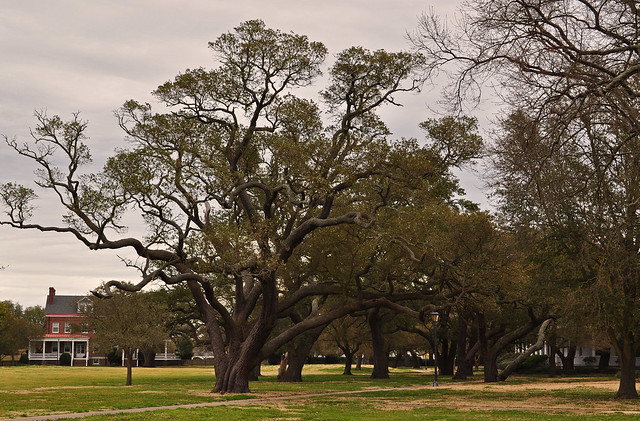
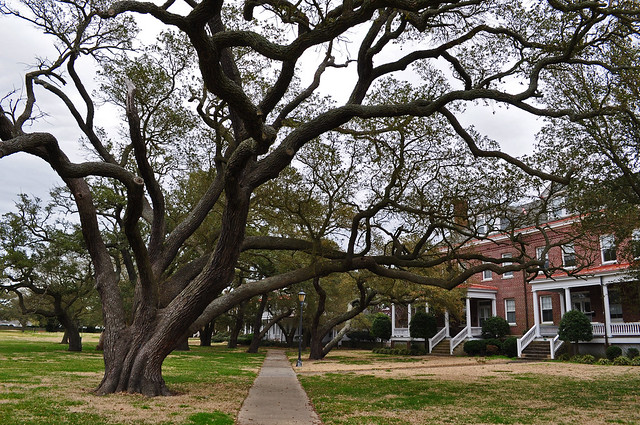
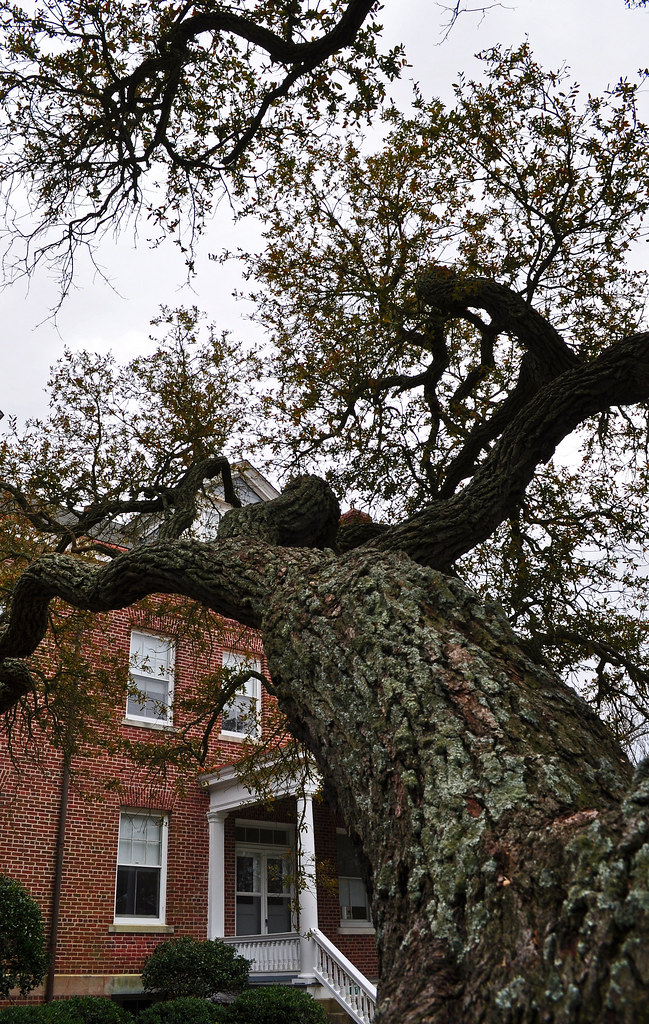
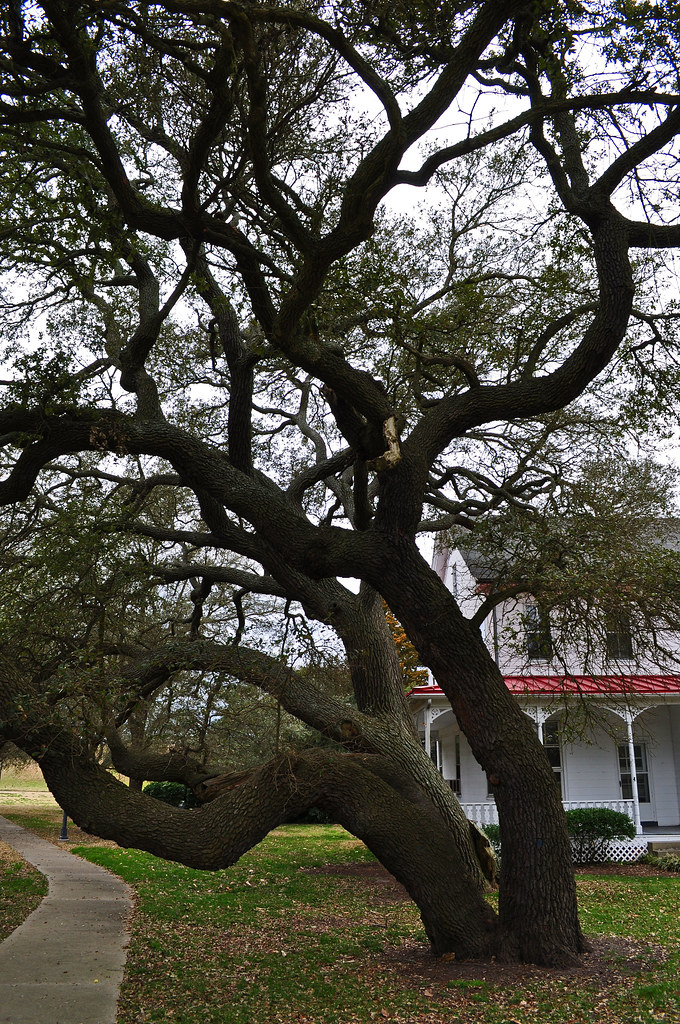
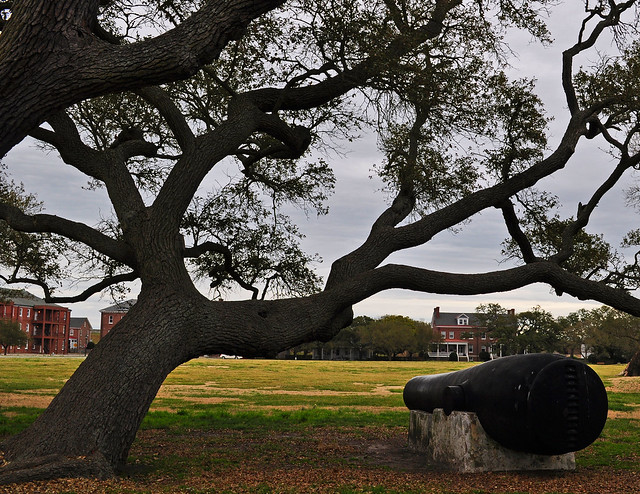
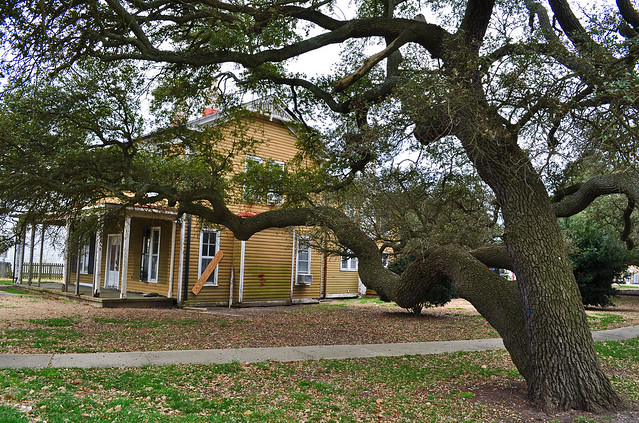
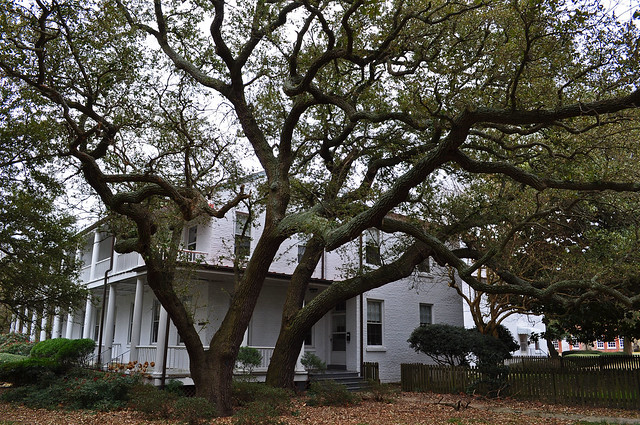
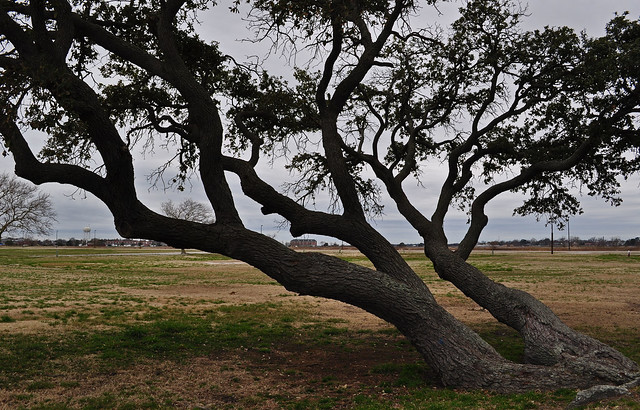
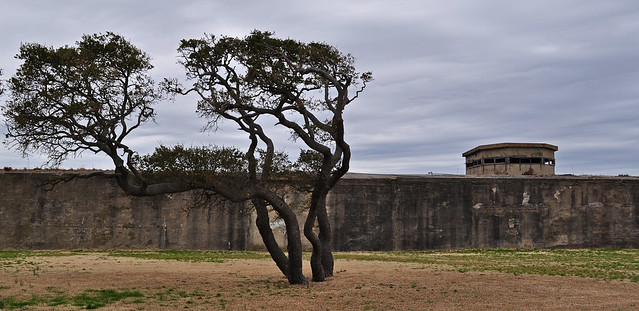
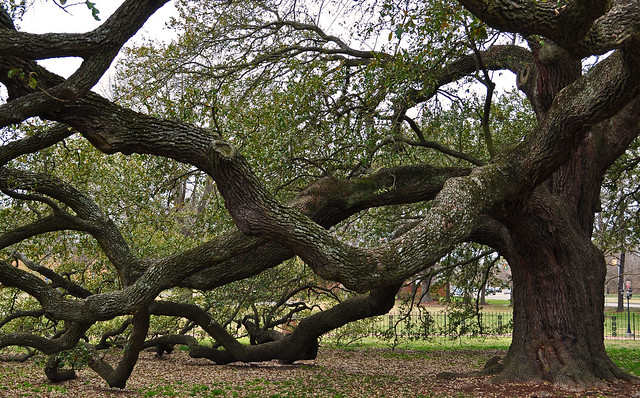
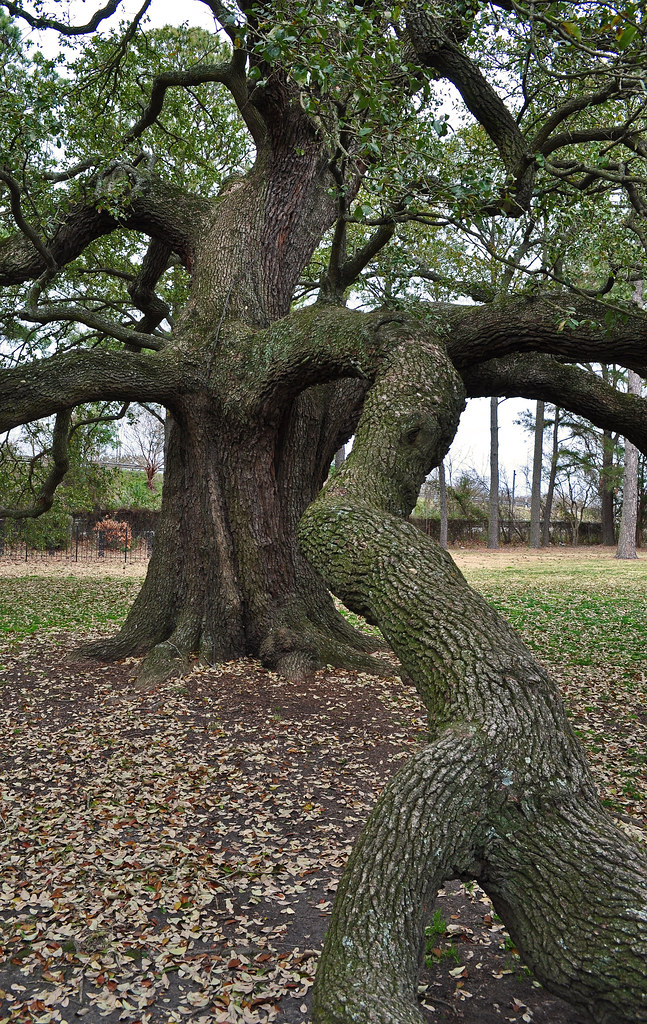
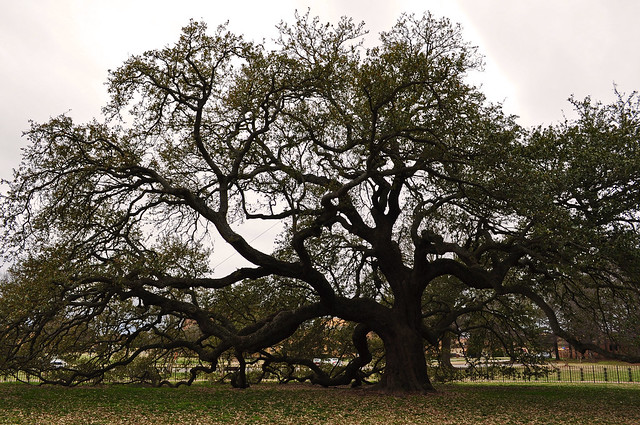
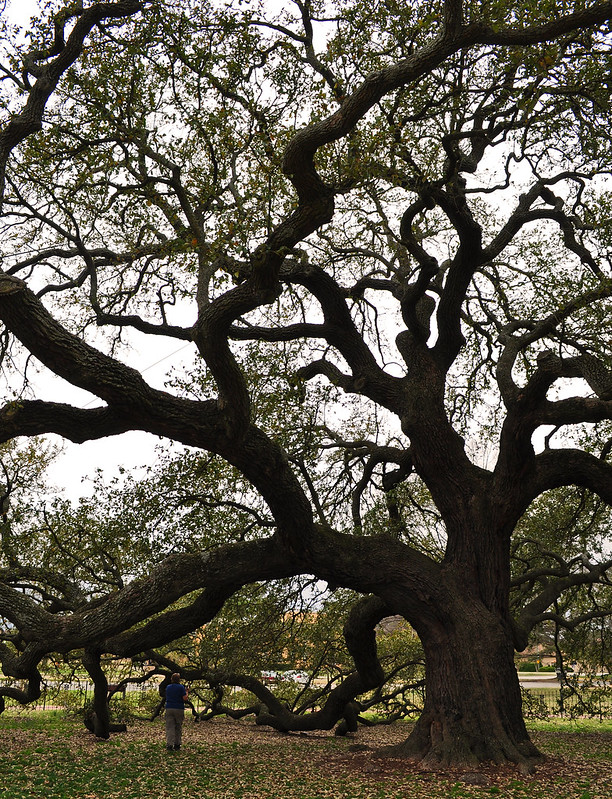




Oh yes, I'm a huge fan of Live Oaks. I've seen amazing specimens in Florida, Louisiana, and Texas. It's so hard to believe that the branches can balance and maintain horizontally like that! Also, they're leaves are so different from other Quercus species. Amazing photos of amazing trees!
ReplyDeleteI've read that those horizontal branches are incredibly strong, and were sought after for ship's ribs.
DeleteAs I was reading I wondered if you took her to see the Emancipation Oak as well, then I got to that part of your post. Such glorious trees.
ReplyDeleteHad to take my phone into the Verizon store to get a new Sim card...when the guy rebooted the phone with the new card, my opening screen came up-- the Angel Oak, taken last summer when we went to Charleston. He commented on the photo. :-)
I marvel at these trees and the storms they have endured. Great photos.
I love the Angel Oak, and am so glad it is now public property. When I lived down there it was a privately owned roadside attraction.
DeleteWow, gorgeous!
ReplyDeleteThanks Cathie!
DeleteI've had a crush on these trees for decades, but have never lived where they grow. Thank you for sharing the Emancipation Oak and its history. As always, your photos are beautiful.
ReplyDeleteThanks Gail. I haven't always lived where they grow, but it might become a requirement.
DeleteAaaah, so beautiful Les. Thank you.
ReplyDeleteYou are welcome Dee, and thank you for the compliment.
DeleteHow fun to have a blog buddy visit! Your oaks are gorgeous and so different from ours in Maine. My eyes were damp too, reading about your Emancipation Oak. Such history!
ReplyDeleteIt was fun to have Marilyn visit. She is headed your way in the next few weeks, and will be volunteering at a wildlife refuge in the north of the state, perhaps Moosehorn?
DeleteAbsolutely stunning. Sometimes I forget that you can see old specimen trees like this in the US. To be able to see so many in one location must be breathtaking, since the photos are. Interesting that Oaks up here rarely branch so low. The varieties I see are instantly recognizable esp. when bare. But they look like trees that will reach out and grab you on Halloween. They tend to be spooky in silhouette. Or at least that's how I see them.
ReplyDeleteThey are even more spooky when covered in Spanish moss.
DeleteWell it sounded like you were setting us up for a little disappointment in the quality of Virginia's oaks, but then the pictures tell a completely different story. Wow! Cool place to see them, and amazing the history some of these older trees have witnessed.
ReplyDeleteGiven time, the quality of the oak here can be beautiful. They just reach that state much quicker further south.
DeleteI love those big old live oaks in the south. Very interesting about the Emancipation Oak. I'm putting Fort Monroe on my list of places to see. Incidentally, there is now a play about General Butler being produced in Chicago. I hope to go see it.
ReplyDeleteI think you will enjoy the visit, and I hope you enjoy the play.
DeleteWonderful trees and photos. The story of Emancipation Oak induces eye-moisture for sure. Thinking of all that tree had witnessed is astonishing and make our history come to life.
ReplyDeleteThis post brought back happy memories of our trip there on a cloudy day. I'm saving my emancipation oak blog for emancipation day. Still need to blog about Fort Monroe. Thanks again for a wonderful weekend - loved sharing it with a fellow plant and photography geek.
ReplyDeletePlease contact me about the Live Oaks at Fort Monroe , I work there and am looking to set up a walking tour of the Oaks and would like your imput
ReplyDelete757-775-1642 is my work cell
ReplyDelete